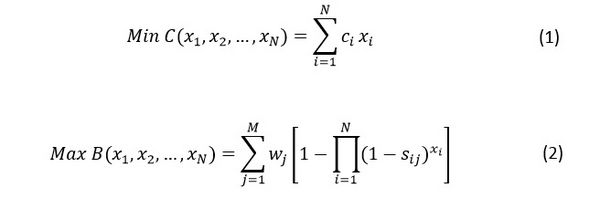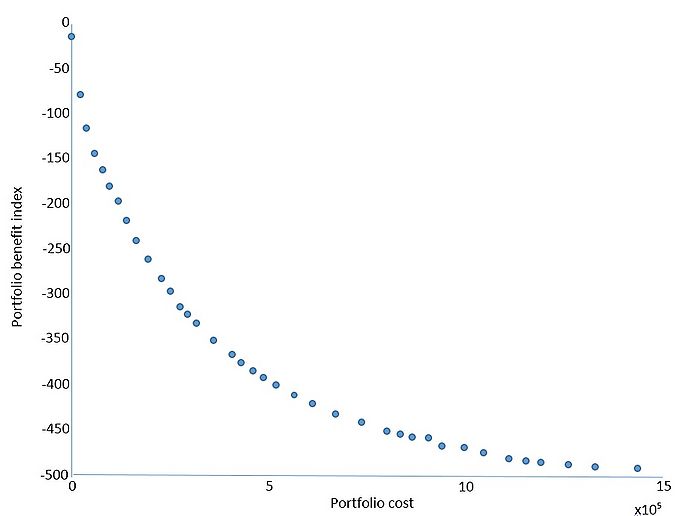Lean 6 Sigma in project management
| Line 80: | Line 80: | ||
-Design of experiments (DOE): This tool is used in order to define cause-effect relationship. The commonly terms associated to DOE are the controllable and uncontrollable input factors which are factors that can and cannot changed in a project. It also includes the response or output measures which are the results of business activities. In this tool, it is also included the hypothesis test which helps to determine which are the critical factors for the statistical evaluation. Another concept taken into account during DOE is the interaction between inputs, better known as correlation. Finally blocking and replication are interesting topics for the DOE in order not to modified input information using different measurement tools <ref name="LSS11 "> Sundararajan ,K. , http://www.isixsigma.com '' Design Of Experiments- A Premier '' </ref> | -Design of experiments (DOE): This tool is used in order to define cause-effect relationship. The commonly terms associated to DOE are the controllable and uncontrollable input factors which are factors that can and cannot changed in a project. It also includes the response or output measures which are the results of business activities. In this tool, it is also included the hypothesis test which helps to determine which are the critical factors for the statistical evaluation. Another concept taken into account during DOE is the interaction between inputs, better known as correlation. Finally blocking and replication are interesting topics for the DOE in order not to modified input information using different measurement tools <ref name="LSS11 "> Sundararajan ,K. , http://www.isixsigma.com '' Design Of Experiments- A Premier '' </ref> | ||
| − | ==Example: The multi-objective case== | + | ==Example: The multi-objective case== |
An example of application of the Lean Six Sigma portfolio management can be found in the literature. In that case it is considered the problems of identifying the projects to implement Lean Six Sigma concepts. As the number of projects increase in a company, the risk of misusing resources of a company increase as well. The successful implementation of Six Sigma in a company involve a management involvement, training, communication and changes in the organization. | An example of application of the Lean Six Sigma portfolio management can be found in the literature. In that case it is considered the problems of identifying the projects to implement Lean Six Sigma concepts. As the number of projects increase in a company, the risk of misusing resources of a company increase as well. The successful implementation of Six Sigma in a company involve a management involvement, training, communication and changes in the organization. | ||
| Line 95: | Line 95: | ||
Each of the point of the figure shows different optimal for project portfolio. The correct choose of the order in which projects are selected and execute depends on the necessities of a company. In this example, the Pareto frontier tells that for a total selection of projects with a portfolio cost e.g 1 million $ the portfolio benefit index should never be higher than around -470(the lower the better) in order to correctly implement Lean Six Sigma. | Each of the point of the figure shows different optimal for project portfolio. The correct choose of the order in which projects are selected and execute depends on the necessities of a company. In this example, the Pareto frontier tells that for a total selection of projects with a portfolio cost e.g 1 million $ the portfolio benefit index should never be higher than around -470(the lower the better) in order to correctly implement Lean Six Sigma. | ||
| − | The example described shows a direct application of some tools explained in the “Tools” section. A deeper explanations of this case can be found in the literature. | + | The example described shows a direct application of some tools explained in the “Tools” section. A deeper explanations of this case can be found in the literature. <ref name="LSS12 "> Hu, G. , Wang, L. , Fetch, S. , Bidanda, B. (2008) International Journal Of Production Research'' A Multi-Objective Model For Portfolio Selection To Implement Lean And Six Sigma Concepts '' </ref> |
==Drawbacks== | ==Drawbacks== | ||
Revision as of 18:03, 21 September 2015
A rigorous management control of portfolios aim to control the risk and focus in investing in the most important programs in accordance with the overall strategy of the organization. [1]. Portfolios provide strategic guidance from the operationalization of strategies, transparency and Efficient execution.
The Lean Six Sigma is a methodology that combines the lean philosophy and the Six Sigma methodology in order to increase the value of resulting products at a lower the cost. This combined methodology helps to gain in knowledge in how business processes are developed.
The Lean Six Sigma in portfolio management may help to conduct business processes into more efficient and effective ways. It comprehends all parts of the organization from the overall Portfolio management point of view, the programs developed into a company and finally, the individual projects inside the organization. In this article it will be described how the waste reduction and high quality control can be implemented in each business operation of the entire portfolio project in order to maximize the profit.
Contents |
Background
In today's world, the strategies in companies are commonly seeking competitive advantages while gaining in profitability and quality. Miscalculation in delivery times or budgets can affect this competitiveness and cause sever risk for the ROI (Return Of Investment) of a firm. The main advantage doing a correct portfolio management is to optimize the overall programs/projects evaluating individual projects. In traditional portfolio management the progress of each project is tracked against tasks and not value created. This may lead to ineffectiveness that Lean Six Sigma may help to avoid. [2] The Lean methodology became popular in Japan during the 30 ’s. One of the first applications was focused in textile and cars manufacturing, using the Just In Time(JIT) philosophy for the Toyota firm. This concepts spread around the world and new applications were found such lean portfolio management. The Six Sigma methodology has a shorter history. It was stablished in 80’s as new topic for quality manufacturing in Motorola. Nowadays, its implementation in management is considerable popular.
Introduction
Lean Six Sigma in project portfolio management is a methodology that combines the philosophy and tools from Lean project management and Six Sigma management. In lean portfolio management the main objective is to minimize costs and maximize the use of the resource available. The portfolio planning includes the allocation of resources according to strategic priorities. Lean methodology adds flexibility and simplicity in the lower stage of the organizational level to align the overall strategic resources of portfolios with individual projects. This alignment is done by decomposing entire programs in small projects and resources are distributed through an analysis of priority, either through value stream mapping tool or others tools proposed in this article. Small projects enhance the flexibility of the people who are working in those projects. The prioritization is done after an approach to stakeholders and clients to identify features that can increase the ROI of an organization. The estimation of this priorities is done in small cycles since business conditions may change all time. Thus, the priority of different tasks may change as well. [2]
As a complement to the lean philosophy, Six Sigma offers the possibility to improve the quality of processes and products. As a part of the supporting activities of the program management quality is an important concepts in portfolio management. It is a deliverable feature from benefits and it is a requirement for the Program Governance and Risk Management. Apart from the planning point of view, the Quality management plays actually an important role when goals and planning in projects. In Six Sigma portfolio management, procedures are standardized at the operational level of a company and focus in delimited goals always addressing to the highest ROI. It is a methodology that has to be implemented in the entire organization, from the strategic level to the operational level. A strong point that Six Sigma can offers is its capability to align the projects with the strategies followed by the companies. As in lean methodology, Six Sigma project are commonly for the short term. [3]
Applying both concepts together, lean six sigma is able to: [1]
- Reduce the complexity of business processes: The simplification and standardization may help to improve efficiency and activities inside the organization, e.g. standard analysis in the Center Of Excellence functions.
- Optimize processes: The Lean concepts are able to optimize process using waste reduction tools where delays on delivery can be avoid.
- Develop culture aiming to enhance the performance of operational teams: The Lean Six Sigma philosophy proposed a cultural change in the organization, able to have a deep impact in the performance at operational levels.
Implementation
In order to develop a Lean Six Sigma methodology in portfolio management, several aspects have to be taken into account. For instance there has to be at least four categories of certified belt employees as in Six Sigma:
- Champions: They take responsibility of the implementation of Lean Six Sigma across the entire organization.
- Master Black belts: They have coach responsibility and spend all their time in Six Sigma evaluation, from the statistical analysis data to assure consistency of Six Sigma across function and departments.
- Black Belts: They are focused in specific projects to apply Six Sigma and they dedicate full time for Six Sigma implementation.
- Green Belts: They are the employees who implement Six Sigma in their jobs responsibilities.
The position of certified belt employees might be located inside each of the management levels: In portfolio management, they can influence for example in the decision-making for the strategic approach or the benefits control by supervising and applying correctly the Lean Six Sigma methodology and tools. In project management they can assure that certified standards are respected in the methodology of the projects.
Another concept applied from Six Sigma is the DMAIC framework:
-Define: In this first step, it is defined the opportunities the company have for different projects. It is the most important phase since it targets the limited sources of a company.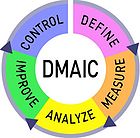
-Measure: In this phase, the business processes is documented. It is also validated the measurement techniques and the historical Six Sigma is assessed. The
-Analyse: The data collected in the previous step is analysed and the performance of different project is evaluated evaluating the roots of multiple problems.
-Improve: The teams in projects are able to eliminate the top case sufficiently to achieve the overall objectives of a project.
-Control: The companies have been able to establish mechanism of control on possible causes of problems for the long run.
In portfolio management, DMAIC methodology can be used in many parts of the program management. It can be used in decision-making phase of portfolio management at the strategic level to improve the assessment of the orientation of a company. An example given can be defined for the Wind industry, where it can be defined the opportunities given such subsidies for new companies who wants to participate in that market. Those subsidies and other opportunities can be measured and analyse. The data collected can be always improve by assessing financial or political risks and finally controlled since the wind industry is changing all the time and new green energy source may become threats.
Tools
The tools used for the Lean Six Sigma portfolio management are a combination of the tools of both methodologies:
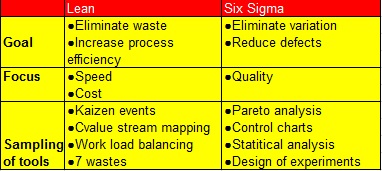
From the Lean methodology is commonly used:
-Kaizen Events: This tool is based in the rapid improvement of business processes. It was firstly implemented by Toyota in the manufacturing industry. Nowadays companies use then in portfolio management as well to determine why for example a project has its certain costs or why a determine number of resource are used in it. These questions may lead to new ones that in the end will help to identify all kind of waste of resources a company may have. [6]
-Value stream mapping: The value stream mapping is a tool to help the understanding of every value proposition in a company. It identifies the positive and negative of value proposition, for example the network between stakeholders involved in creation and delivery of new products. It also identify conflicting values and it identifies opportunities to reoriented projects or entire portfolios to more profitable business processes. [7]
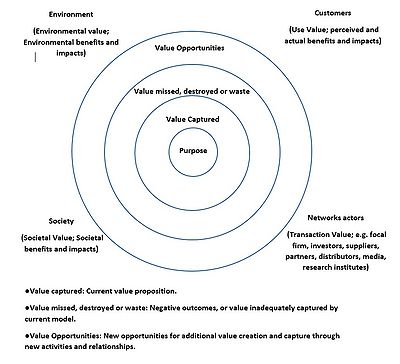
-Work load balancing: It aims to reduce non-value added activities in a project. Load charts are in literature were timing in different types of operation is controlled. [8] This tool may have deep impact under a program strategy alignment in a business case, since it is able to coordinate times to adjust better to the time to market a products need to be delivered.
-7 wastes: It is another Lean tool originally used for the manufacturing industry that can be implemented in business growth evaluation. It includes evaluation of putting too much work in progress originating bottle necks. It also analyse delays and extra-capabilities of the organization that were hidden until then. [9]. The 7 wastes can treat as residuals those activities in project management which are considered not to give extra value to the product or seriously deteriorate other important activities and erase or reorient them.
From the Six Sigma methodology:
-Pareto analysis: It is a statistical tool for decision-making on the activities who has the bigger effects on a project. It is a key tool in Six Sigma and it consist on a bar chart of activities ordered by their importance. [10]It can participate for example in the Measure step of the DMIAC methodology. It has broad applications as it will be shown in the next section.
-Control charts: It is a tool to monitor process, stability and control in projects. A control chart follows a time series where there is a central line of how processes are supposed to be done and deviation of this processes are limited by upper and lower boundaries. [11]. Under a program management point of view, it can be used in a control stage of the Program Governance, where periodic reviews of the progress of a program is done in order to determine whether benefits coming from a project are within the boundaries.
-Statistical analysis: The statistical analysis evaluates data gathered in the DMAIC process using statistical tools, from calculating variances to distribution of the data in order to execute some short of control in projects. It help the improve phase of the DMIAC, where several inputs of the model may be changed and new result can show improvements or not. Statistical analysis is a broad topic that can be used every time the DMAIC has measured data. It can be used to asses quality controls in Program Quality Management or to have a deeper understanding in Control Charts.
-Design of experiments (DOE): This tool is used in order to define cause-effect relationship. The commonly terms associated to DOE are the controllable and uncontrollable input factors which are factors that can and cannot changed in a project. It also includes the response or output measures which are the results of business activities. In this tool, it is also included the hypothesis test which helps to determine which are the critical factors for the statistical evaluation. Another concept taken into account during DOE is the interaction between inputs, better known as correlation. Finally blocking and replication are interesting topics for the DOE in order not to modified input information using different measurement tools [12]
Example: The multi-objective case
An example of application of the Lean Six Sigma portfolio management can be found in the literature. In that case it is considered the problems of identifying the projects to implement Lean Six Sigma concepts. As the number of projects increase in a company, the risk of misusing resources of a company increase as well. The successful implementation of Six Sigma in a company involve a management involvement, training, communication and changes in the organization.
Consider the case where multiple projects are proposed in a company. The correct Lean Six Sigma implementation would deal with maximizing the benefits and minimizing costs:
Where ci are the costs, xi is a binary number which tells if the project is selected, B is the benefits, wj is the weight and sij is the normalized performance score:
To the previous mathematical model 3 kind of constraints are added: Resource constraints, Diversity constraints and Management limit constraint. The resource constraint equation tries to include the limitations a company has to implement Lean Six Sigma in every project selected as there is a limited number of certified belt employees who are able to process with those implementations. The Diversity constraint takes into account that in the application of Lean Six Sigma involves all actors in a project. Decision makers not always want to involve all stake holders in Lean Six Sigma. Finally, the Management constraints equation tries to englobe the limits of projects a management group is able to handle. This analysis was done for a conductor company where 51 proposal project were evaluated. The potential benefit index is given as:
ends showing the following analysis:
Each of the point of the figure shows different optimal for project portfolio. The correct choose of the order in which projects are selected and execute depends on the necessities of a company. In this example, the Pareto frontier tells that for a total selection of projects with a portfolio cost e.g 1 million $ the portfolio benefit index should never be higher than around -470(the lower the better) in order to correctly implement Lean Six Sigma.
The example described shows a direct application of some tools explained in the “Tools” section. A deeper explanations of this case can be found in the literature. [13]
Drawbacks
The implementation of Lean Six Sigma can often lead to loose simplicity of projects. The common pitfalls found are:
-So much attention in belt certification: Coming from the Six Sigma methodology, a proper Lean Six Sigma implementation requires green and black belt certifications. This characteristic may led employees to complete the belt certification with more enthusiasm than pursue real value for a business process.
-Unbalanced resources: When there are many belt candidates focused in belt certification it could happened a high demand on subject matter experts who are not able to attend to everything.
-Collect too much information or do not evaluate it properly: Six Sigma is a methodology data driven. It is observed in some companies a tendency to collect much more data that required and with poor data quality. Prejudices of people can also provoke not to read data gathered in a proper way.
- Rigid program implementation: As mentioned in previous chapter Lean Six Sigma take advantage of lean implementation in order to enhance speed and flexibility on projects. When the organization focus so much in the methodology tools the company may end up in inflexible procedures where many templates shall be filled out and all this advantages may be lost.
- Not following properly the DMAIC method: Another common mistake in the business world is to go directly for the implementation phase without considering to gather and analyse sufficient data.
- Assume that belt candidates have managerial skills/background: A Lean Six Sigma portfolio management has to include green and black belts employees with sufficient managerial skills and background. It usually happens that the selection of the candidates for this belts certificates have not been done considering that field.
-Assume there is a best way and not better ways: Lean Six Sigma philosophy is a continuous improvement methodology where there is not just a best way to manage projects but there is always better ways for improvement.
Conclusions
The present article shows how two complementary methodologies can be implement in Portfolio Management. This existing methodologies are not new in the market despite the fact that new application can be found in portfolio management.
Some examples in portfolio management has been drawn, but it application in other activities, either coming from strategic, tactical or operational level can be found. A proper implementation of Lean Six Sigma methodology aim to align all business processes of a company with its overall strategies and interests.
Nevertheless the implementation of Lean Six Sigma has several drawbacks. A rigid implementation of the tools without attending the needs of the company is a common mistake. The application of Six Sigma also bring problems concerning the “belt certification”.
Even though the implementation of Lean Sigma can be complex in the beginning, results of this methodology aim to give more efficient, effective a simple ways to handle every business operation.
References
- ↑ 1.0 1.1 Labarre, C. ,OTC Conseil Americas Can Lean Six Sigma Streamline Your Project Portfolio?
- ↑ 2.0 2.1 http://www.netobjectives.com Chapter 4 Lean Portfolio Management
- ↑ M. D., Marly, University Of São Paulo, (2013) Six Sigma Projects: The portfolio Management Perspective
- ↑ http://qmssblog.blogspot.dk/2015/03/combining-dmaic-and-lean-events-to.html Combining DMAIC and lean events to maximize process improvements
- ↑ 5.0 5.1 5.2 Lilly,M. DeCoste,D. (2012). Demystifying Lean Six Sigma .
- ↑ United States Environmental Protection Agency. Lean Thinking and Methods: Kaizen .
- ↑ 7.0 7.1 Bocken, N.M.P., Short, S., Rana, P., Evans, S., Coporate Goverance, Vol. 13 Iss: 5 , pp. 482 – 497 A Value Mapping Tool For Sustainable Business Modelling .
- ↑ Quality America Inc. Level Load Balancing .
- ↑ Terry, J. 7 Wates That Impact Business Growth.
- ↑ Haughey, D., http://www.projectsmart.co.uk Pareto Analysis Step by Step
- ↑ Berardinelli ,C. , http://www.isixsigma.com A Guide To Control Charts
- ↑ Sundararajan ,K. , http://www.isixsigma.com Design Of Experiments- A Premier
- ↑ Hu, G. , Wang, L. , Fetch, S. , Bidanda, B. (2008) International Journal Of Production Research A Multi-Objective Model For Portfolio Selection To Implement Lean And Six Sigma Concepts
